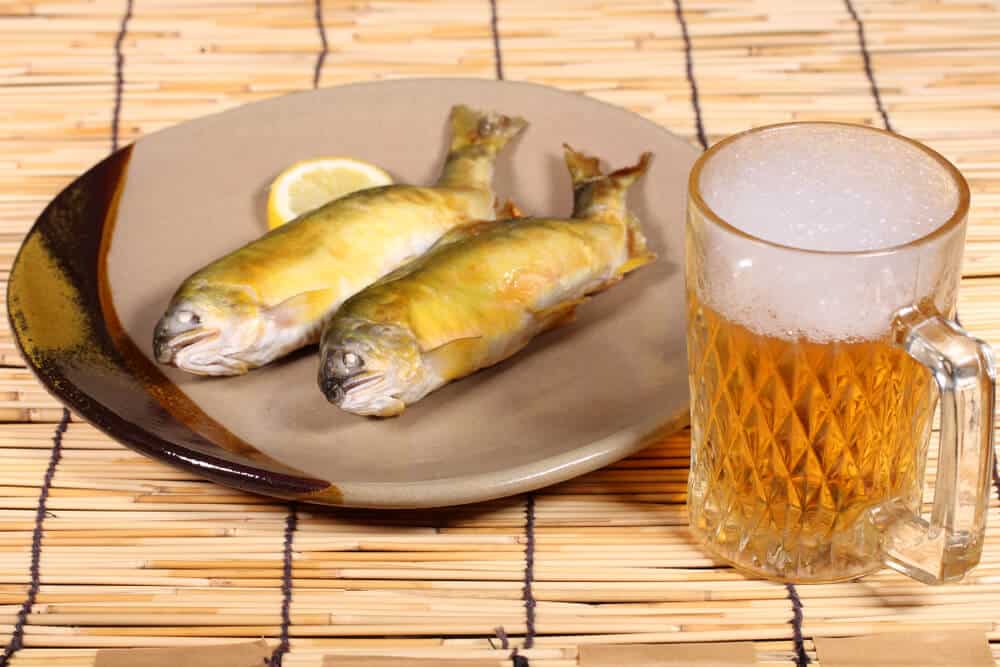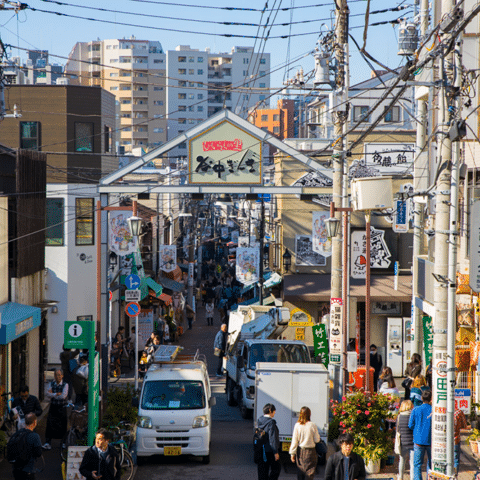
Even as summer winds down we can still enjoy many dishes specific to this time of year In fact, one of the defining aspects of “Washoku”(Japanese food) is that the cuisine is determined by the season. Spring is mostly filled with dishes inspired by the cherry blossoms, strawberries, and green tea. But as spring turns to summer, ayu (鮎, often translated as Japanese Sweetfish) begin to appear–and just in time! Generally considered to be the most savory river fish in Japan, ayu is a staple food at the many festivals and barbecues throughout the summer months.
A Long Love Affair
Ayu have inhabited the streams of Japan for all of recorded history. The fish appears in the Nihon Shoki, one of Japan’s oldest records of history and mythology, in a story about Empress Jingu (~169-269AD). While the empress was preparing to invade the Korean Peninsula, she caught an ayu and saw it as an omen of Japan’s predestined victory (there is no record of the outcome, but the empress did return from her campaign). This is why the kanji for ayu, 鮎, is a unique combination of fish (魚) and fortune (占).

Beyond its mythical importance, ayu is loved for its simple, yet savory flavor that changes with the seasons. In the Man’yosho (万葉集), the oldest collection of Japanese waka poetry, the word “ayu” is used to evoke a summer atmosphere. Additionally, young ayu (若鮎 wakayu) caught in May and June, signify spring, while spawning ayu (落ち鮎 ochiayu) represent the fall. A particularly beautiful waka is:
Far away people 遠つ人
In Matsuura River 松浦の川に
Angling for sweetfish 若鮎釣る
Upon your sleeve 妹が手本を
I would rest my head 我れこそ卷かめ
(Manyoshu 857: Translation by the author with help from manyou.plabot.michikusa.jp/manyousyu5_857.html.)
Ayu Fishing
Ayu fishing displays two great parts of Japanese culture: rural life and ukai (鵜飼). If you have the time to get away from the cities while in Japan, you will be treated to truly beautiful nature, simplicity, and calmness. Take a walk along nearly any rural river from June to September and you will easily spot groups of ayu. You’ll also see people fishing with exceedingly long rods in a style that’s somewhat similar to common fly fishing. It can be quite amazing how methodically the fishermen are able to pluck the sweetfish from the river.
Ayu fishing technique takes advantage of the species’ intense territorialism to lure the ayu into attacking the encroaching bait. If you are especially lucky, you’ll come across a stall or maybe just a shichrin (of Ariana Grande fame) where an old lady will be grilling the freshly caught ayu. By all means, have a taste!
The other, perhaps more crowd-pleasing, way in which ayu are caught is through the practice of ukai. This ancient practice uses trained cormorants to dive for the fish, hold it in their gullet, and return to the fisher’s boat to regurgitate the still living ayu. While it may not be the most mouthwatering description, rest assured that the fish is thoroughly cleaned and cooked before consumption. Visitors to Gifu prefecture and Arashiyama in Kyoto (famous for its bamboo forest and Monkey Park) can see ukai in the summer months. In Kyoto, you can watch from the shore, or get boat tours to be closer to the action!

The Dish of Summer: Shioyaki Ayu
There is a time and place for everything, especially in Japan. While you could order a plate of grilled ayu at a bar and be nearly guaranteed that it would be delicious, the best way to enjoy sweetfish is at a festival, from a street vendor. Obviously, not everyone who comes to Japan will be fortunate enough to catch a festival (though they are happening nearly constantly throughout the summer), but street vendors in markets like Nishiki in Kyoto will usually have them.
Ayu is mostly eaten after being grilled and lightly salted in a style known as shioyaki ayu (literally, “salt-grilled ayu”). Many (more qualified) food critics would say that “the simplicity and subtlety of its flavor is the epitome of the Washoku aesthetic”; I would just say, “It just tastes freaking good.” Traditionally (and most deliciously) the whole fish is skewered and place upright, over burning charcoal. Importantly, the fish is skewered so that it looks as though it is still swimming. This is to signify the freshness of the catch. While the entire fish can be consumed (and is delectable this way), many people will refrain from eating the head and fins. If I may be so bold, I suggest giving the whole thing a try!
If the sight of the skewered fish is off-putting, ayu can also be cooked tempura-style or deep fried. While these dishes may not be as common at festivals, it shouldn’t be too difficult to find a pub in Kyoto with it on the menu. There are also establishments that will have raw ayu, but this may be harder to find.

Watermelon, Shaved Ice, and Ayu, Oh My!
The Japanese affection for ayu continues to this day. It has even been designated as the prefectural fish of Gifu and Gunma Prefectures. Along with watermelon and kakigori (shaved ice), ayu is a staple of summer’s soul food. While in the country, be on the lookout for the telltale fishing rods of ayu fishermen and the sweet, charcoal aroma of shioyaki ayu. If you can stand the heat, summer is a magical time to be in Japan. Lazy afternoons spent at the local park or walking along the shaded streets beneath green trees, listening to the song of cicadas and children’s laughter, barbecuing with friends and watching fireworks–these are just some of the things that a traveler may enjoy while munching on one of Japan’s most delicious treats.
Sources:
http://www.zen-ayu.jp/ayu/
https://www.japantimes.co.jp/life/2005/09/21/environment/ayu-sweetfish/#.XK7DljD7TIU
http://manyou.plabot.michikusa.jp/manyousyu5_857.html



